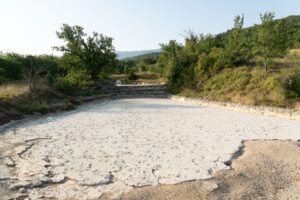In a recent review article, Lima & Meneses (2023, Geoconservation Research, 6 (1): 114–127) reported on the Azores Geopark, introducing a new geosite for São Miguel Island. We here express our concerns regarding the data presented in this review article. In our commentary, we focus mainly on the use of older bibliographic sources and inaccurate […]
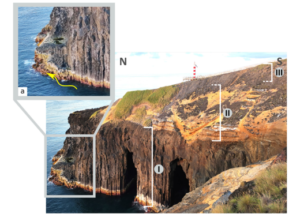
Numerous Upper Jurassic–Lower Cretaceous tracksites are found in the Maestrazgo UNESCO Global Geopark; sauropod and ornithopod tracks are abundant and there are some rare stegosaurians and theropods. The Lower Cretaceous ichnite sites are dominated by ornithopod tracks, while only one Upper Cretaceous site, containing theropod tracks, has been documented. Seven of these sites are classified […]
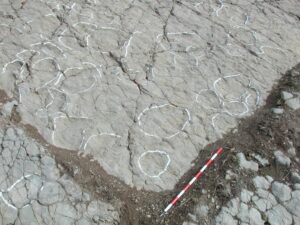
The current territory of the Maestrazgo UNESCO Global Geopark has provided fossils that pioneered dinosaur research in Spain. The first Spanish dinosaur, Aragosaurus ischiaticus (published in 1987), five other new genera of dinosaurs and six species were described from fossils found at Geopark sites. These are the sauropod Galveosaurus herreroi (Galvesaurus herreroi) in 2005, the […]
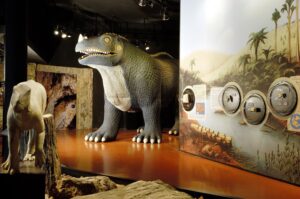
The Black Country UNESCO Global Geopark, located in central England, joined the Global Geopark Network in July 2020. It is the most urban Geopark in the network with a population of approximately 1.1 million people. Located in an area rich in raw materials (Carboniferous coal, iron, and clay; Silurian limestone), it was quarried and mined […]
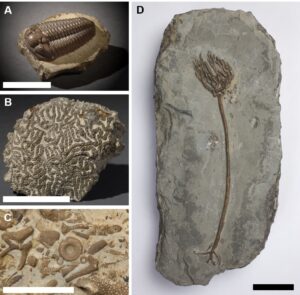
The Basque Coast UNESCO Global Geopark is known worldwide for its great thickness of Upper Cretaceous and Paleocene “flysch” formations. The K/Pg and P/E boundaries are among the most popular sites, together with the IUGS-ICS designated Selandian and Thanetian global stratotypes. However, an important section of the sea cliff outcrops is formed by an older […]
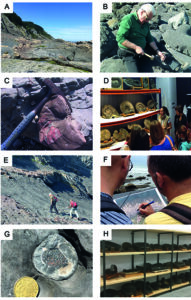
Piesberg quarry is famous for its Upper Carboniferous plant and arthropod fossils, including several holotypes of flying insects. The high degree of maturity of the Piesberg strata, such as the presence of anthracitic coal, quartzite, and large quartz crystals, led to controversies over a possible underlying thermal anomaly. The Piesberg is of further importance for […]
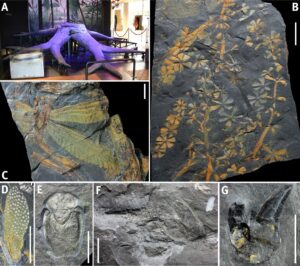
Visits to paleontological sites are one of the most popular geotourism activities, but their appeal may have drawbacks. Deciding which sites are suitable for dissemination and appropriate measures for their optimal conservation can be complex. Here, we present a geoconservation inventory of 15 Upper Cretaceous paleontological sites with dinosaur and other vertebrate remains from the […]
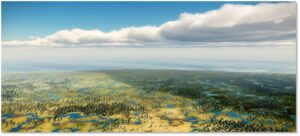
The Fossil Forest of the Aragoncillo Range is one of several paleontological sites of exceptional scientific value in the Sierra de Selas (Province of Guadalajara, central Spain). This shows an accumulation of silicified tree trunks along with well-preserved macro- and microflora of lower Permian age. This ancient forest, dominated by tree ferns and conifers, was […]
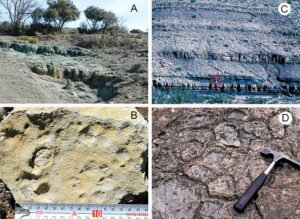
The Luberon early Oligocene fossil Lagerstätte yields exquisitely well-preserved fossils as testified by the remains of articulated skeletons, skin outlines, feathers and original pigmentation patterns. The fossils include plants, insects, amphibians, reptiles, birds and mammals from ancient lacustrine-terrestrial ecosystems of the early Oligocene. The fossil birds are especially important, including one of the most complete specimens […]
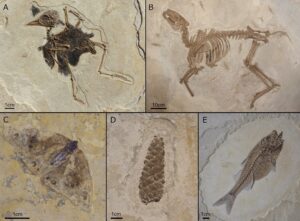
Trace fossils represent an important component of the Earth’s heritage that provide important keys for learning about the diversity and evolution of life and environments through time. They represent a rich and fragile geoheritage that requires special geoconservation measures. The Saignon tracksite, yielding thousands of tracks attributed to mammals, is located in the heart of […]
